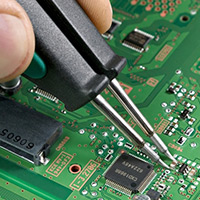

The Advantages and Applications of Frosted Safety Glass
Frosted safety glass, a type of glass that has been treated to create a translucent surface, is a popular choice in both residential and commercial applications. This glass not only offers privacy but also enhances safety, making it a preferred option for various settings. In this article, we will explore the benefits, manufacturing processes, and diverse applications of frosted safety glass.
What is Frosted Safety Glass?
Frosted safety glass is typically produced using a process called sandblasting or acid etching, which creates a frosted, opaque surface on the glass. This process diffuses light but prevents clear visibility, providing the much-needed privacy in sensitive areas. In addition to being aesthetically pleasing, the “safety” aspect of frosted glass comes from its durability; it is often made of tempered or laminated glass, which is much stronger than standard glass and is designed to withstand impact without shattering into hazardous shards.
Benefits of Frosted Safety Glass
1. Privacy Without Sacrificing Light One of the most significant advantages of frosted safety glass is its ability to allow natural light into a space while maintaining privacy. This is essential in areas such as bathrooms, conference rooms, and offices—that need to feel open and airy but also require a level of seclusion.
2. Safety and Durability Since frosted safety glass is commonly manufactured as tempered or laminated glass, it is less likely to break under stress. In the event of an accident, tempered glass breaks into small, blunt pieces, reducing the risk of injury. Laminated glass, on the other hand, holds together even when shattered, due to an interlayer of plastic that keeps the shards from scattering.
3. Aesthetic Value Frosted glass is not just functional; it is also stylish. The soft, diffused appearance of frosted glass can elevate the design of any room, offering a modern and sophisticated look. Its versatility allows it to fit seamlessly into various architectural styles, from contemporary to traditional.
4. Easy Maintenance Maintaining frosted safety glass is relatively simple. Unlike clear glass that shows fingerprints and smudges easily, the frosted surface hides these blemishes and usually requires just a gentle wipe with a damp cloth to clean.
Manufacturing Processes
The manufacturing of frosted safety glass involves several steps. The most common methods include

- Sandblasting This technique uses high-pressure air to propel fine particles against the glass surface, creating a frosted effect. The level of frosting can be controlled by adjusting the duration and intensity of the sandblasting process.
- Acid Etching In this method, glass is treated with a mild acid to achieve a frosted finish. Acid etching allows for more intricate designs and patterns, making it possible to create custom frosted glass features for various applications.
- Film Application A simpler and less permanent option is applying a frosted film to clear glass. While this is cost-effective and easy to replace, it may not provide the same level of durability or safety as chemically treated glass.
Applications in Various Industries
Frosted safety glass finds applications across numerous industries, including
- Architecture and Interior Design Used in windows, doors, and partitions, frosted glass provides privacy while enhancing the aesthetic appeal of residential and commercial spaces.
- Automotive Industry In vehicles, frosted glass is often used for side windows or sunroofs, providing privacy and reducing glare without compromising visibility.
- Hospitality Sector Hotels and restaurants use frosted safety glass in areas where privacy is required while still permitting light, such as in restrooms and shower areas.
- Healthcare Facilities In hospitals and clinics, frosted glass is used in examination rooms and patient-care areas to maintain patient dignity while allowing staff to monitor activities unobtrusively.
In conclusion, frosted safety glass is a versatile and essential material in modern architecture and design. Its combination of safety, aesthetic appeal, and functionality makes it a popular choice for various applications, ranging from homes to corporate offices. As innovation continues in glass manufacturing, we can expect frosted safety glass to remain a prominent fixture in our built environment.